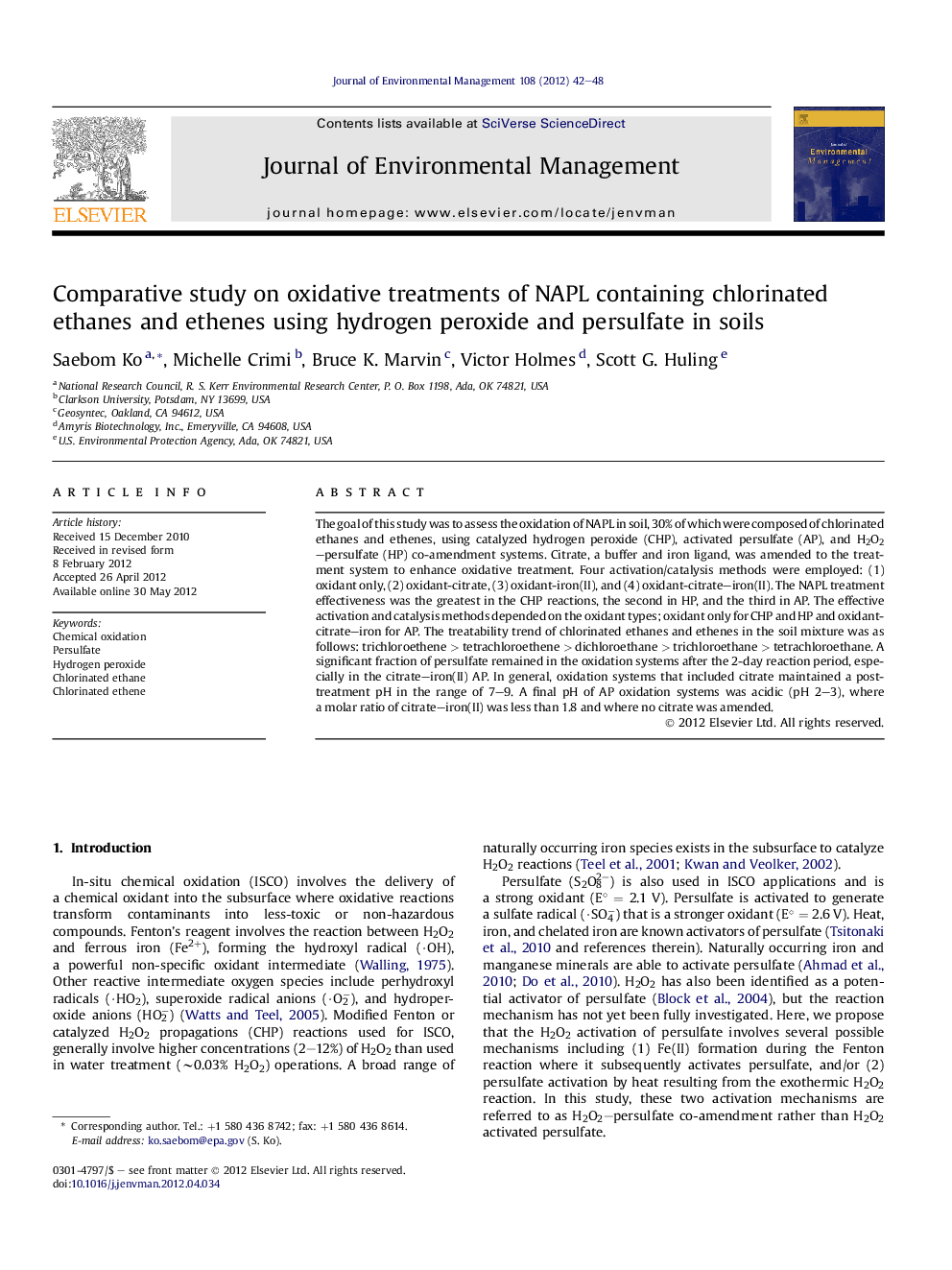| Article ID | Journal | Published Year | Pages | File Type |
|---|---|---|---|---|
| 1056768 | Journal of Environmental Management | 2012 | 7 Pages |
The goal of this study was to assess the oxidation of NAPL in soil, 30% of which were composed of chlorinated ethanes and ethenes, using catalyzed hydrogen peroxide (CHP), activated persulfate (AP), and H2O2–persulfate (HP) co-amendment systems. Citrate, a buffer and iron ligand, was amended to the treatment system to enhance oxidative treatment. Four activation/catalysis methods were employed: (1) oxidant only, (2) oxidant-citrate, (3) oxidant-iron(II), and (4) oxidant-citrate–iron(II). The NAPL treatment effectiveness was the greatest in the CHP reactions, the second in HP, and the third in AP. The effective activation and catalysis methods depended on the oxidant types; oxidant only for CHP and HP and oxidant-citrate–iron for AP. The treatability trend of chlorinated ethanes and ethenes in the soil mixture was as follows: trichloroethene > tetrachloroethene > dichloroethane > trichloroethane > tetrachloroethane. A significant fraction of persulfate remained in the oxidation systems after the 2-day reaction period, especially in the citrate–iron(II) AP. In general, oxidation systems that included citrate maintained a post-treatment pH in the range of 7–9. A final pH of AP oxidation systems was acidic (pH 2–3), where a molar ratio of citrate–iron(II) was less than 1.8 and where no citrate was amended.
► We assess the oxidation of NAPL containing chlorinated ethanes and ethenes. ► Oxidants we test are catalyzed hydrogen peroxide (CHP) and activated persulfate (AP). ► NAPL removal is varied under the different oxidative treatment conditions. ► CHP oxidative treatments demonstrate the greatest percentage removal. ► Iron(II) amendment to an oxidant does not enhance the NAPL treatment.
